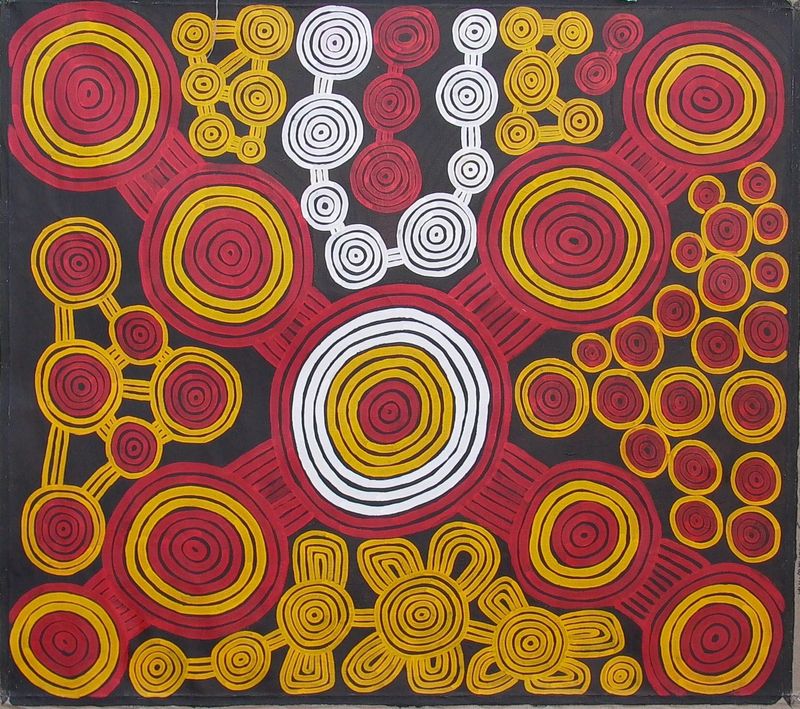Ronnie Tjampitjinpa
One of Australia’s most visionary artists, Ronnie Tjampitjinpa was born circa 1943 at Tjiturrunya, west of Munyinnga (Muyinga), about 100 km west of the Kintore Ranges in Western Australia. He is the son of Uta Uta Tjangala’s older brother, Minpuru Tjangala (c.1899-1976). His family travelled extensively across Pintupi territory, including the area around Wilkinkarra (Lake Mackay) which straddles the Western Australia and Northern Territory border.
After his initiation into Pintupi law at the site of Yumari (close to his birth place), Tjampitjinpa and his younger brother Smithy Zimran Tjampitjinpa walked into the Aboriginal community of Yuendumu. They later joined their parents and other siblings, who after prolonged droughts that had struck the region, had come in to Ikuntji (Haasts Bluff) in 1956 from the Dover Hills/Yumari area and on to the new settlement of Papunya.
Tjampitjinpa worked as a labourer, assisting with the fencing of the aerodromes at Papunya and Ikuntji. It was at Papunya in 1971 where school teacher Geoffrey Bardon assisted the men at to share stories of their homelands, preserving their traditional Dreamings ( Tjukurpa ) and stories through art. The 18 months of his tenure saw the beginnings of the Western Desert Art Movement. The outpouring of artistic activity by the men saw the formation of the Papunya School Painters Co-operative in 1971, incorporated as Papunya Tula Artists a year later.
One of the original shareholders of Papunya Tula, Tjampitjinpa was one of the youngest of the group of men who began painting at Papunya in 1971. Tjampitjinpa recalls that he began working with pencil on paper: ‘ I had seen the other men painting, my brother-in-law, Tjapangati [Timmy Payungka] and my uncle [Uta Uta Tjangala], but I didn’t start with paint, only pencil. Those first ones were miserable, messy.
’ Tjampitjinpa produced only a handful of paintings in the 1970s, with many of these works being of a sensitive nature.
During this period, Tjampitjinpa emerged as one of Papunya Tula Artists’ major painters, pioneering the bold, scaled-up, linear style that came to dominate many of the Walungurru painters’ work during the 1990s. His distinctive aesthetic preoccupation is exemplified in the untitled works of 1994 and 2001. Now one of the last founding members of Papunya Tula Artists, Tjampitjinpa’s career spans more than 30 years.
Ronnie Tjampijinpa’s art is a fine representation of the characteristic Pintupi sytle: a repetition of forms, which are geometric, simple and bold, and pigments which are often restricted to the four basic colours of black, red, yellow and white, although Ronnie also experiments with other colours. He sadly passed away in 2023.

